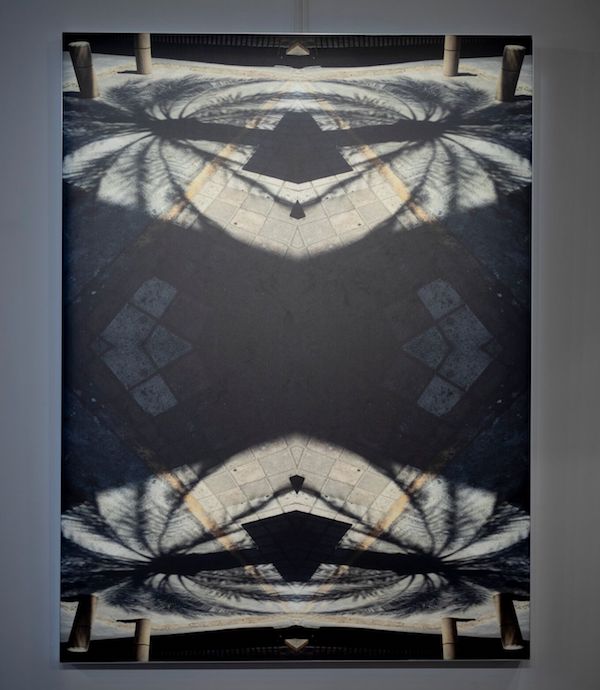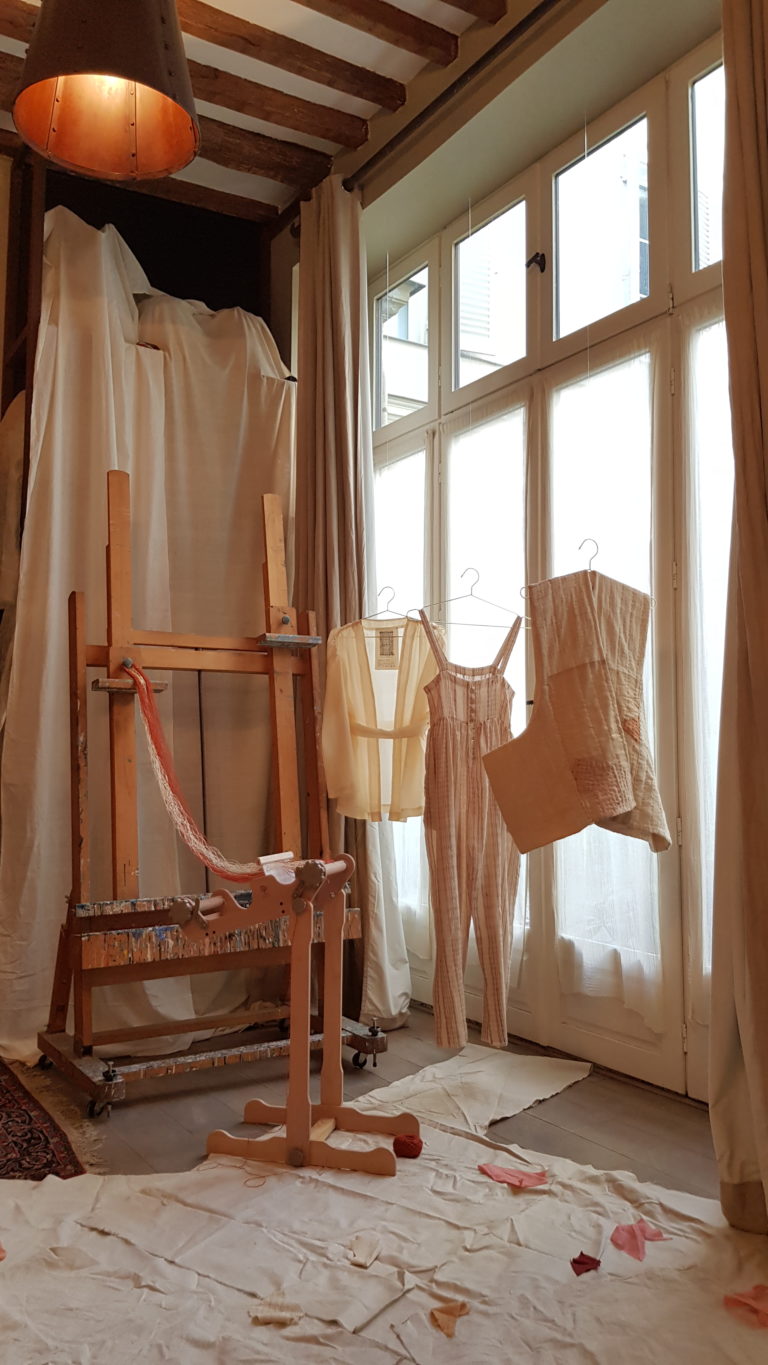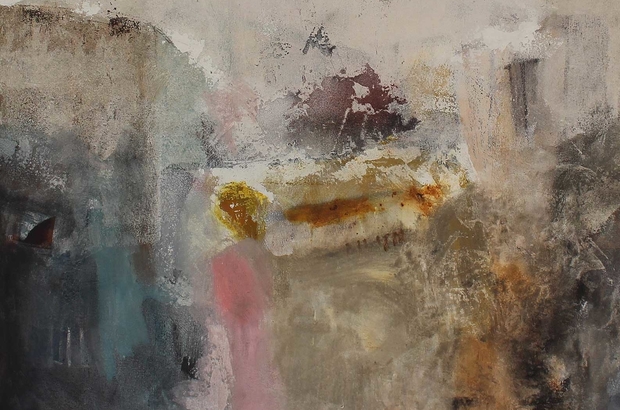INNOKA BARTLETT interviews co-curator of Bahrain Art Week 2018, Kaneka Subberwal.
Kaneka Subberwal’s elegant articulations of thought, as revealed in this interview, was reflected in her recent co-curation of Bahrain Art Week 2018. The founder and co-curator of Art Select and Bahrain Art Week discussed the depth and intricacies of ‘Accumulation: Legacy and Memory’, the title and theme of the exhibition. This idea of accumulation unfolded throughout the exhibition, as artworks explored concepts of built up legacies of loss, and the memories of traditional as well as contemporary Bahrain.
Kaneka founded Art Select in 2008, an art consultancy and creative platform. ArtBAB (Art Bahrain Across Borders) is Art Select’s flagship enterprise. It is an annual art fair that is aimed at exhibiting Bahrain’s Modern Art movement, tracing its development over the past 50 years. Bahrain Art Week is a project which was generated under ArtBAB. It seems to be cumulative of Subberwal’s motivation to bring Bahraini artists to the international art market: previous iterations of the art week have taken place in both Paris and London. ‘Accumulation: Legacy and Memory’, the most recent iteration of Bahrain Art Week, showcased 11 Bahraini contemporary artists.

The artists’ choice of materials was very interesting in Accumulation: Legacy and Memory. How did you highlight material in your curation? Does the use of material reference artistic notions of loss, legacy and memory?
Every year our artists programme has a central theme; last year we focused on education, its forms and effect on an artist’s growth. This year our focus has been on how the artist weaves his or her roots into current day techniques and forms, thereby communicating their growth through multiple materials. Many of the artists in the London exhibition worked with traditional media; traditional crafts were appropriated by the weaving practice of designer Hala Kaiksow and the work of Dawiya Al Alawiyat. Histories of craft practice, traditions and technology were active in the multi-disciplinary works of Othman Khunji. These artists are just some who show how these traditional forms can be modernised and introduced to the international art scene.
Could you comment on the importance of materials here?
As I mentioned, the loom is integral to the artisanal identity of Bahrain – from fabric to rugs where various materials come together. To see the loom integrated into modern methods, through this identity crafted by artist Hala Kaiksow, is very rewarding. In my opinion, Hala’s unique medium of ‘weaving textile to an art form’ sets her apart from other artists working today. Her use of textile in its natural form shows the grit and strength of form and technique. Hala’s sources of inspiration range from nomadic antique Berbers clothing to Tuareg tribes costumes and traditional Bahraini uniforms.
The exhibition is representative of an ancestral collective memory and national legacy. How would you articulate the way loss is weaved into the exhibition?
Loss is a reality, but from it Gain is created. Over the years many a craft has lost pace to modern dynamics. I believe that legacy is all about revival and using that idea of loss to build bigger and stronger things.

The weaving left on Hala Kaiksow’s loom process is a poignant piece within this exhibition space. How does this connect ideas of memory with trade and development in Bahrain?
Bahrain has always been an important trading platform. Today, Bahrain has developed into a niche hub for commerce, IT, and banking. As mentioned earlier, Hala’s piece encompasses that journey of a thread loomed into a fashion garment. At ArtBAB 2019, we will be redefining Bahrain’s rich craft heritage through a contemporary design input. Visitors can view large modern installations and explore chic, contemporary Bahraini crafts that present a new portrait of Bahrain as a country that is open to contemporary thought, and where the timeless old traditions adapt to new thought without losing their essence.
We have taken the talent and the historical memory of craftsmanship that sustains Bahrain’s crafts, passed it through the prism of contemporary sensibility and created a chic, art-based version of Bahraini craft pieces that will have global appeal. We have applied the same skills and rules but to create very different things. We believe that our ‘Artisans Across Borders’ initiative will open new creative channels and is an important step in nurturing a sustainable economy for the creative energy of the Kingdom, making the arts and crafts relevant in the new millennium.

The objects on display are very engaging and some also seem to comment on hidden gender narratives. Aysha Al Moayyed’s engagement with written memories is reflected in her ‘Car Crash’ narrative. It seems to hint at the differences between male and female roles and interaction. How did you engage with these ideas of prejudice as concepts in your artistic curation?
The definition of art is that it cannot be defined for each work carries both the artist’s expression as well as the narrative of the viewer. Aysha Al Moayyed is an emerging artist who we are very proud of; her work like her personality is confident, stable and experimental. She seeks to break boundaries of stereotype; here lies the dichotomy in visualising and translating the artist’s expression, for what one may perceive as prejudice I view as strength and empowerment.
You mention Degas’ quote ‘Art is not what you see, but what you make others see,’ in the opening to your exhibition catalogue. What was the main aim in exposing Bahraini culture into the art world in London?
This exhibition was the fifth in London, following earlier shows at the Victoria & Albert Museum (and an exhibition at Gallery 8), Saatchi Gallery, Lancaster House and Asia House. Our artists’ programme has also been showcased at the Grand Palais in Paris, the Museum of Contemporary Art in Singapore, Bikaner House in New Delhi (India) and the Cosmoscow Art Fair. Our aim is to connect the global art fraternity to the artistic wealth of Bahrain; we have the oldest artistic legacy in the region, with the highest number of practicing artists. My aims are to make Bahrain a focal point for art in the West Asian region and establish a forward-thinking platform to promote the growth of art in the country.
In the future, how would you like to build upon this exhibition and theme in order to integrate Bahraini art and artists into the Western world of art?
The art created by the artists of Bahrain, though contemporary and modern in its form, reflects their roots. The work has a strength that sets these artists apart from the rest as they have the ability to compete on a global platform without detaching from their legacy. I think that confidence and strength of self gives them a niche identity on a global level. Next in the ArtBAB programme is the international exhibition Bahrain Art Fair in March 2019.
Bahrain Art Week was a thoughtful project that showcased young and emerging talent from Bahrain. From traditional textiles, to photography and other mixed media, the show seemed to be curated to emphasise the plethora of materials contemporary artists engage with today. It effectively underscored the adaptability of Bahraini artists to a rapidly changing nation that has experienced continuous socio-political, religious, and environmental transformation.
Featured image: Dawiya Al Alawiyat, Touches, 2017, Mixed Media on Canvas, 120x120cm. Image courtesy of ArtBAB.
Bahrain Art Week was showcased in Mayfair, at Alon Zakaim Fine Art from the 21st to 28th of November, 2018. It will be having its fourth iteration in London in March 2019. The exhibition presented works by: Aysha Al Moayyed, Hala Kaiksow, Othman Khunji, Balqees Fakhro, Marwa AlKhalifa, Dawiya Al Alawiyat, Faiqa Al Hassan, Mohammed Al Mahdi, Nabeela Al Khayer, Taiba Faraj and Salman El Najem.
We thank Kaneka for her time and patience and congratulate her on the success of her projects ArtBAB, and Bahrain Art Week. To read more information her projects, click here. More information on Art Select may be found here.





